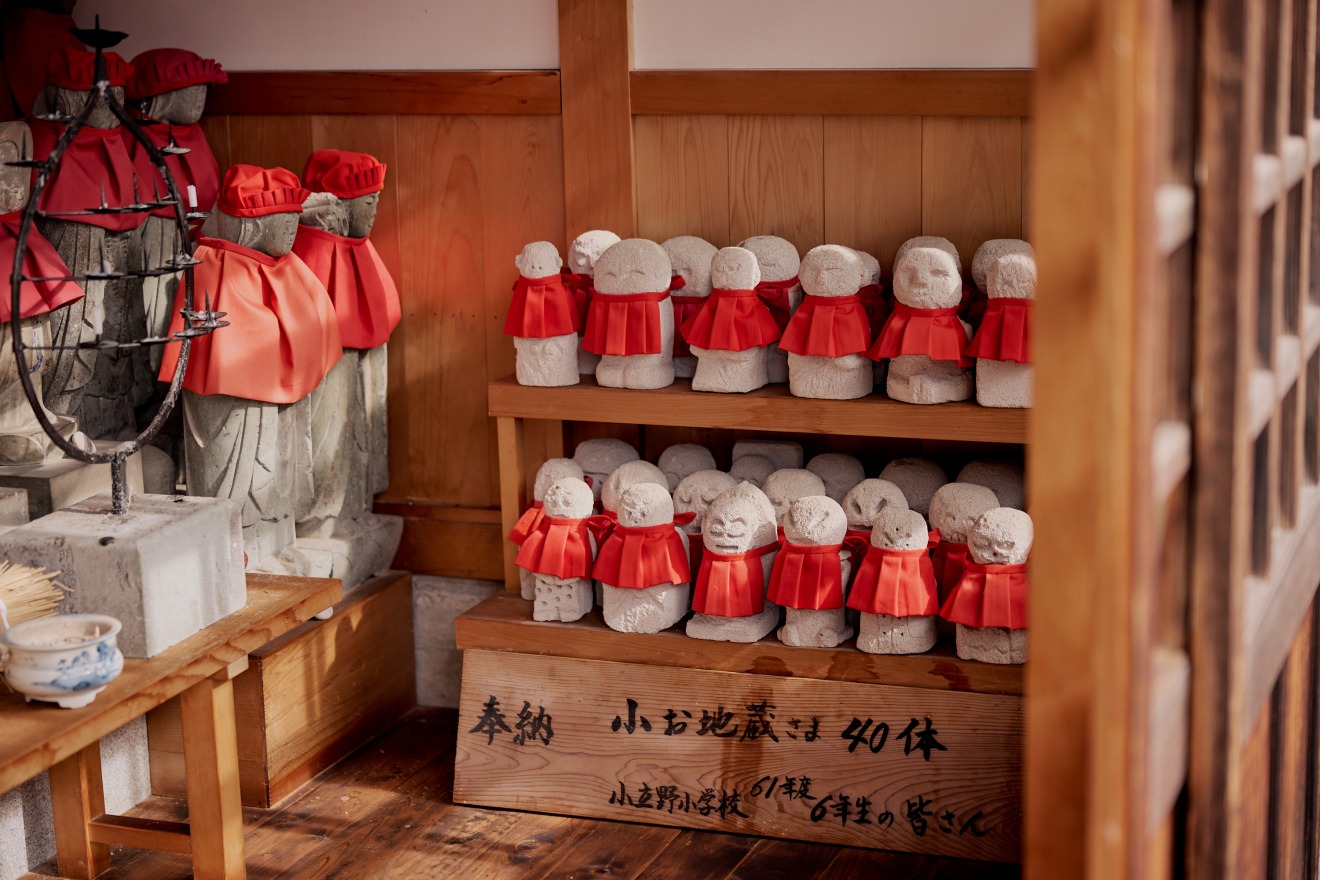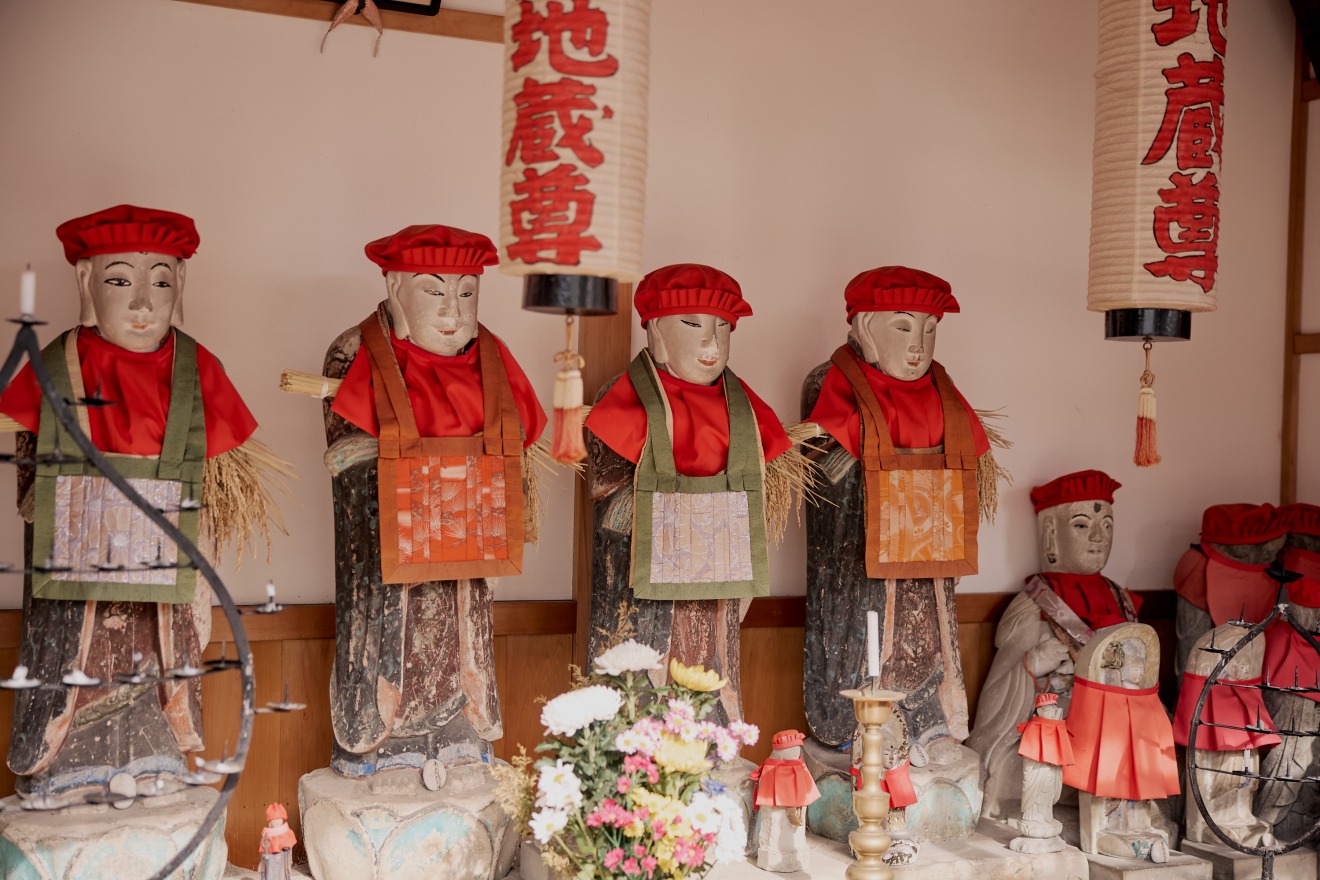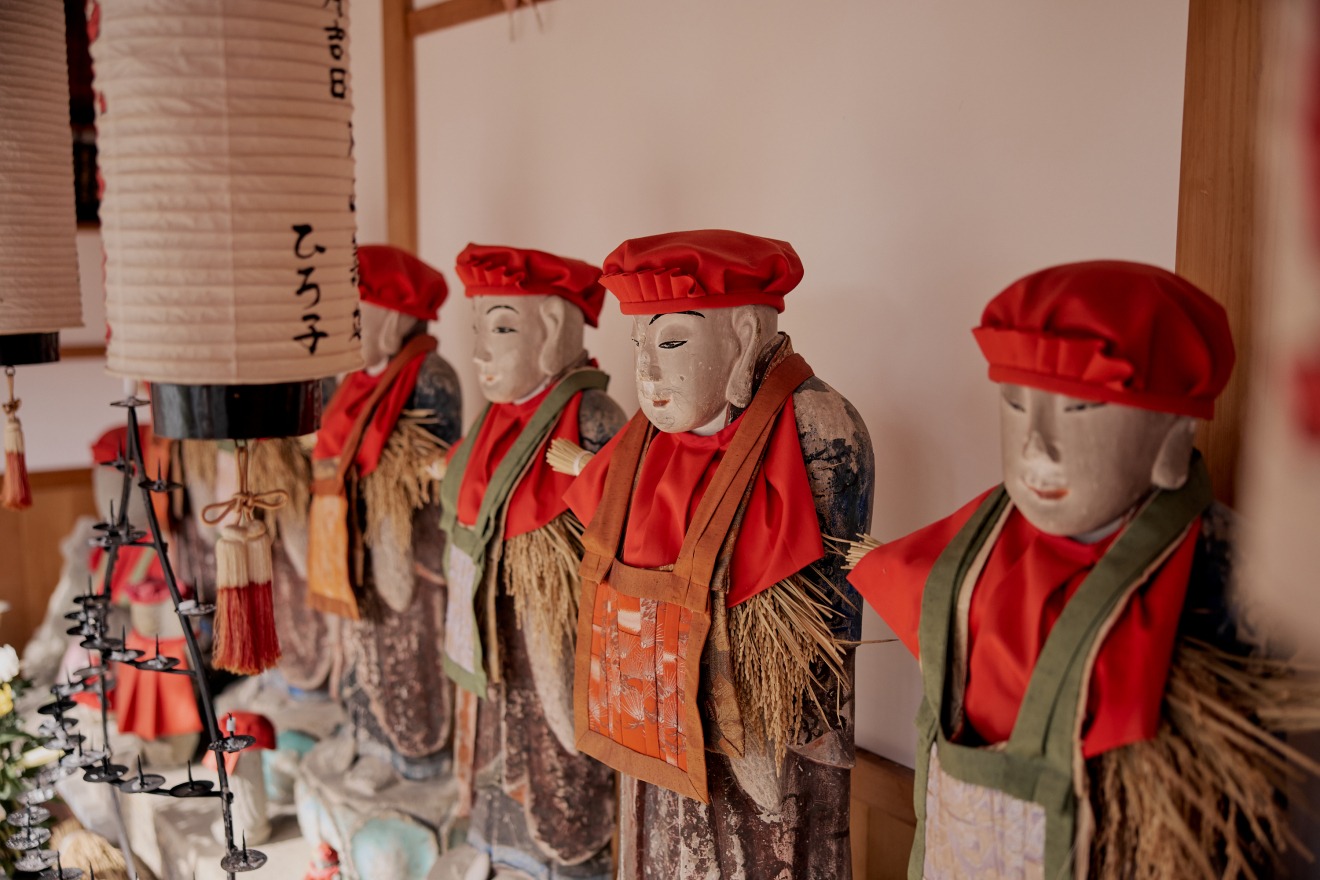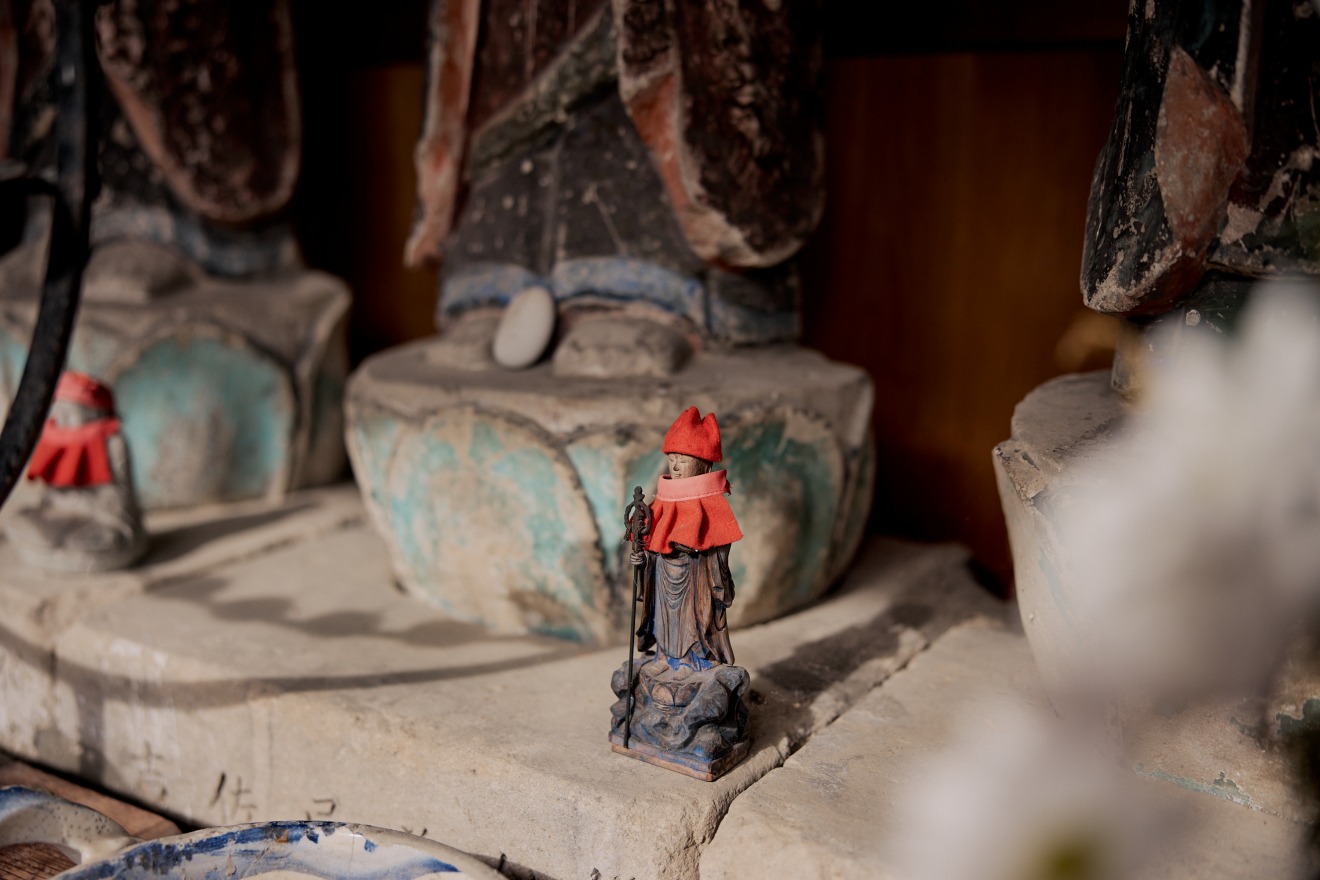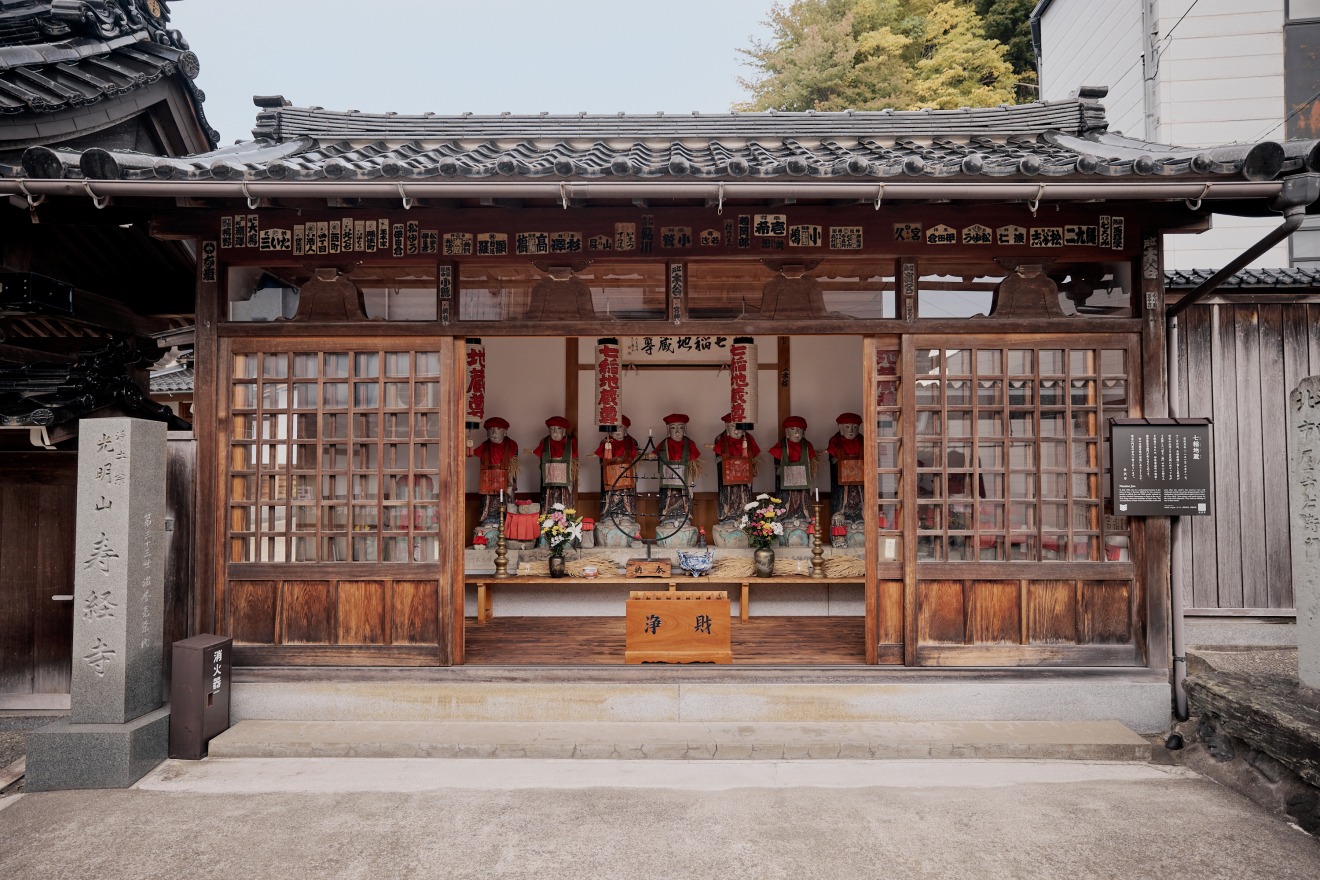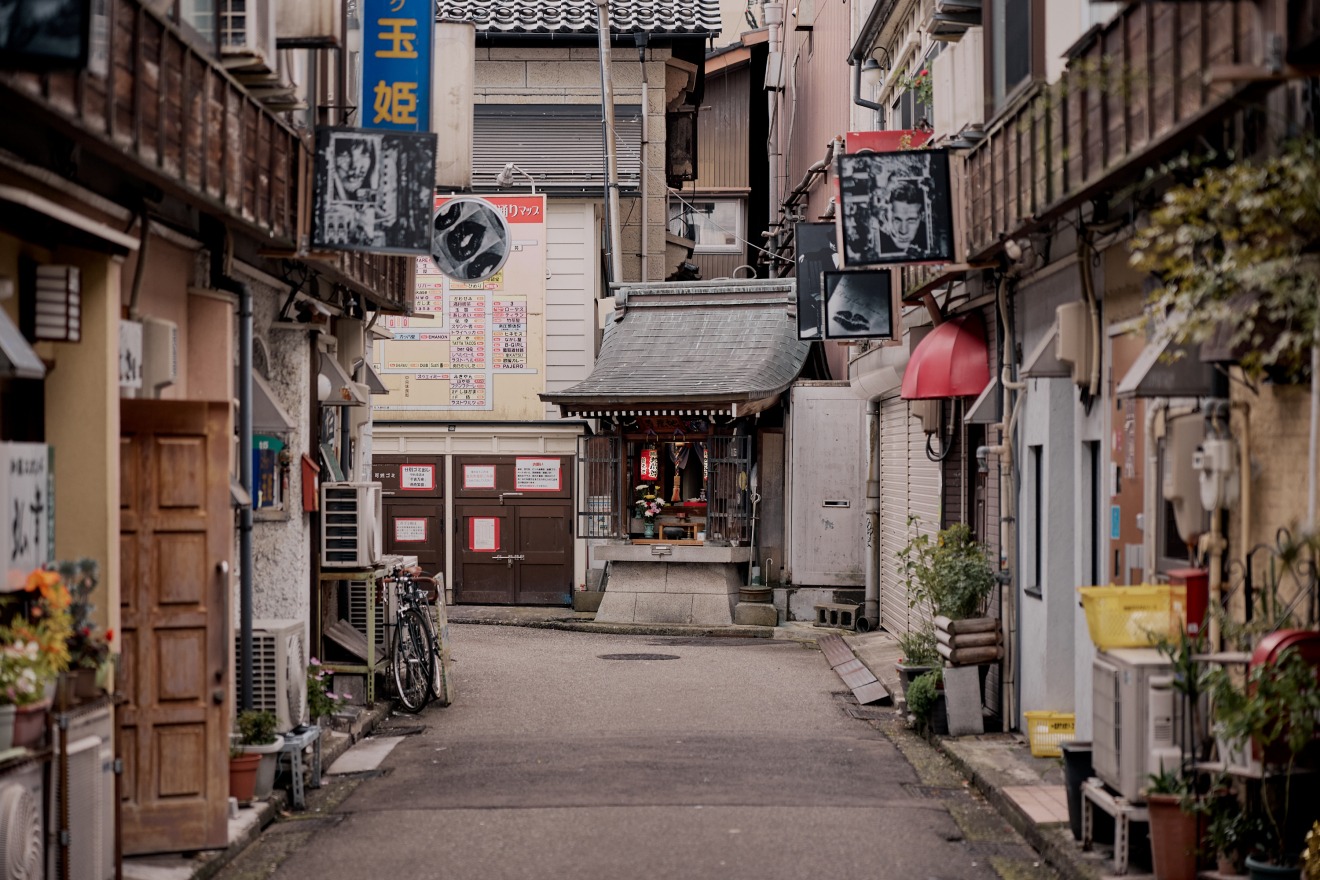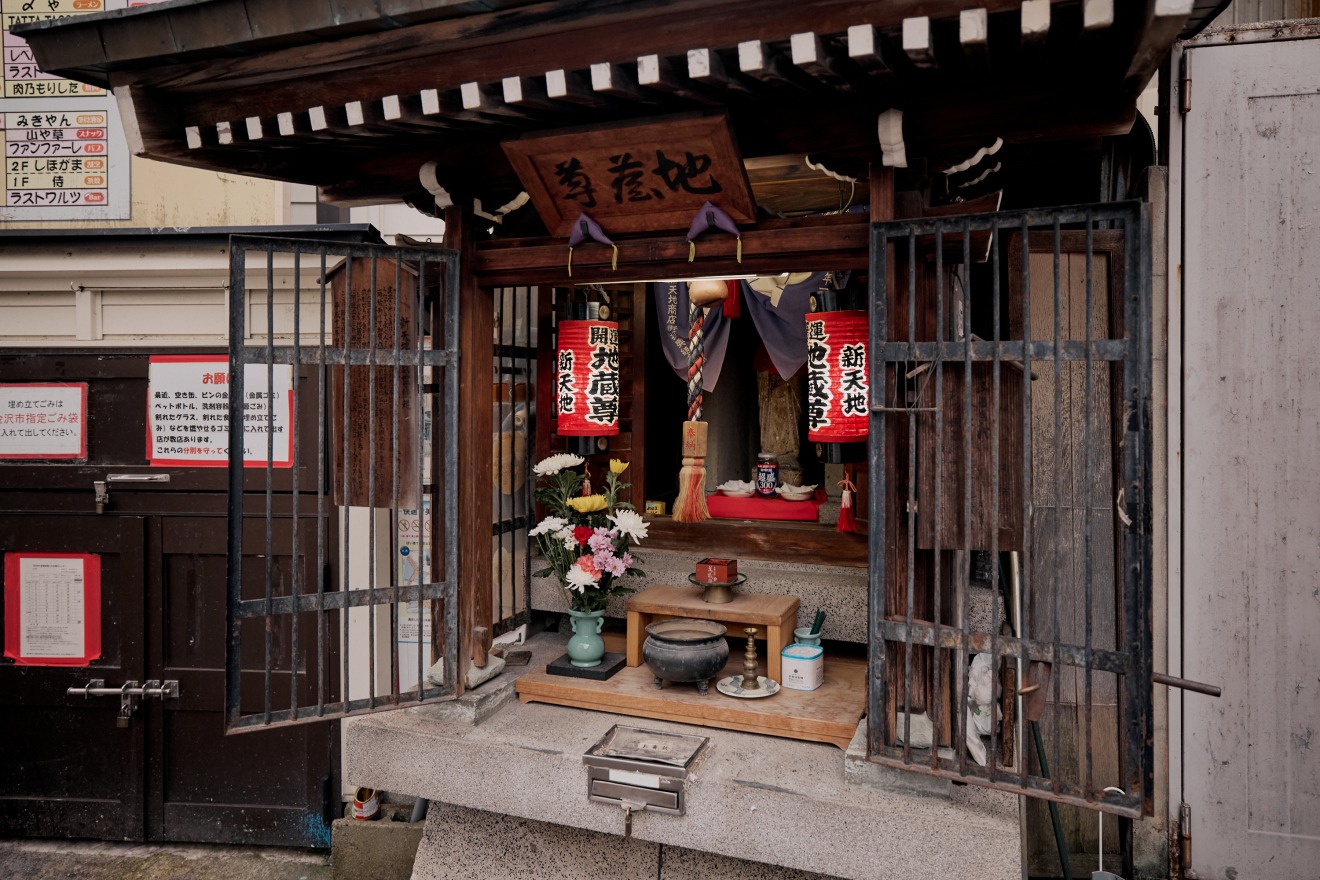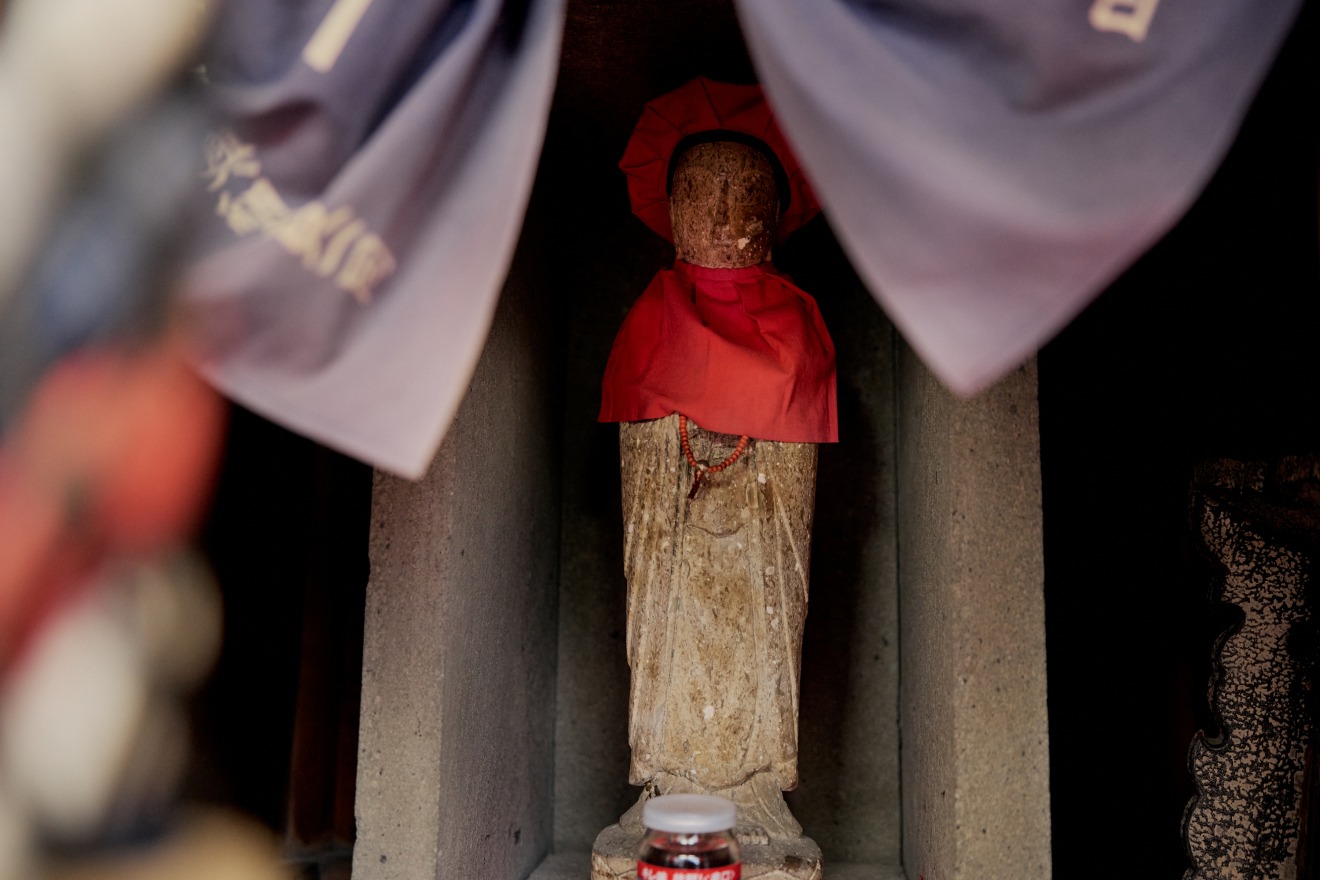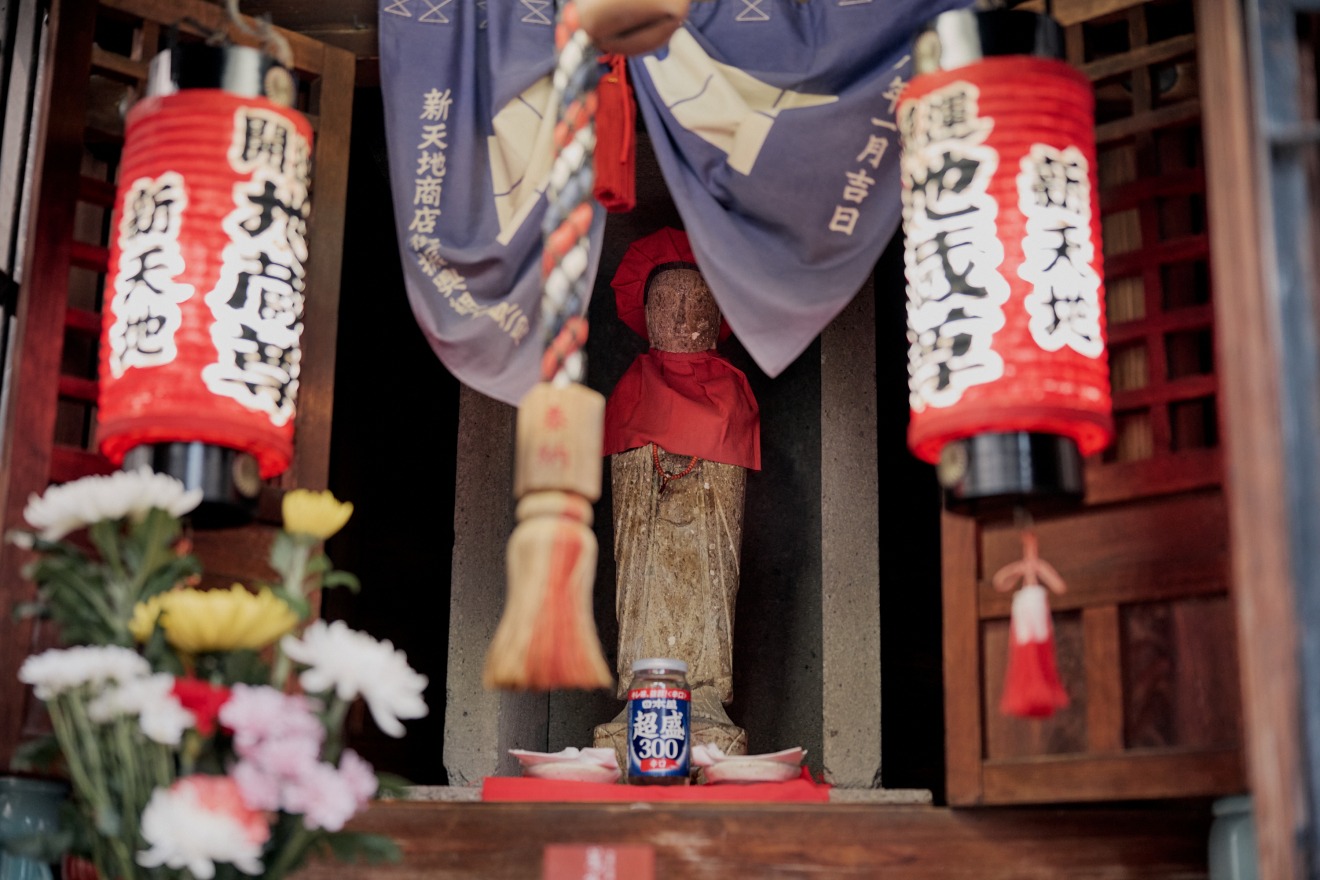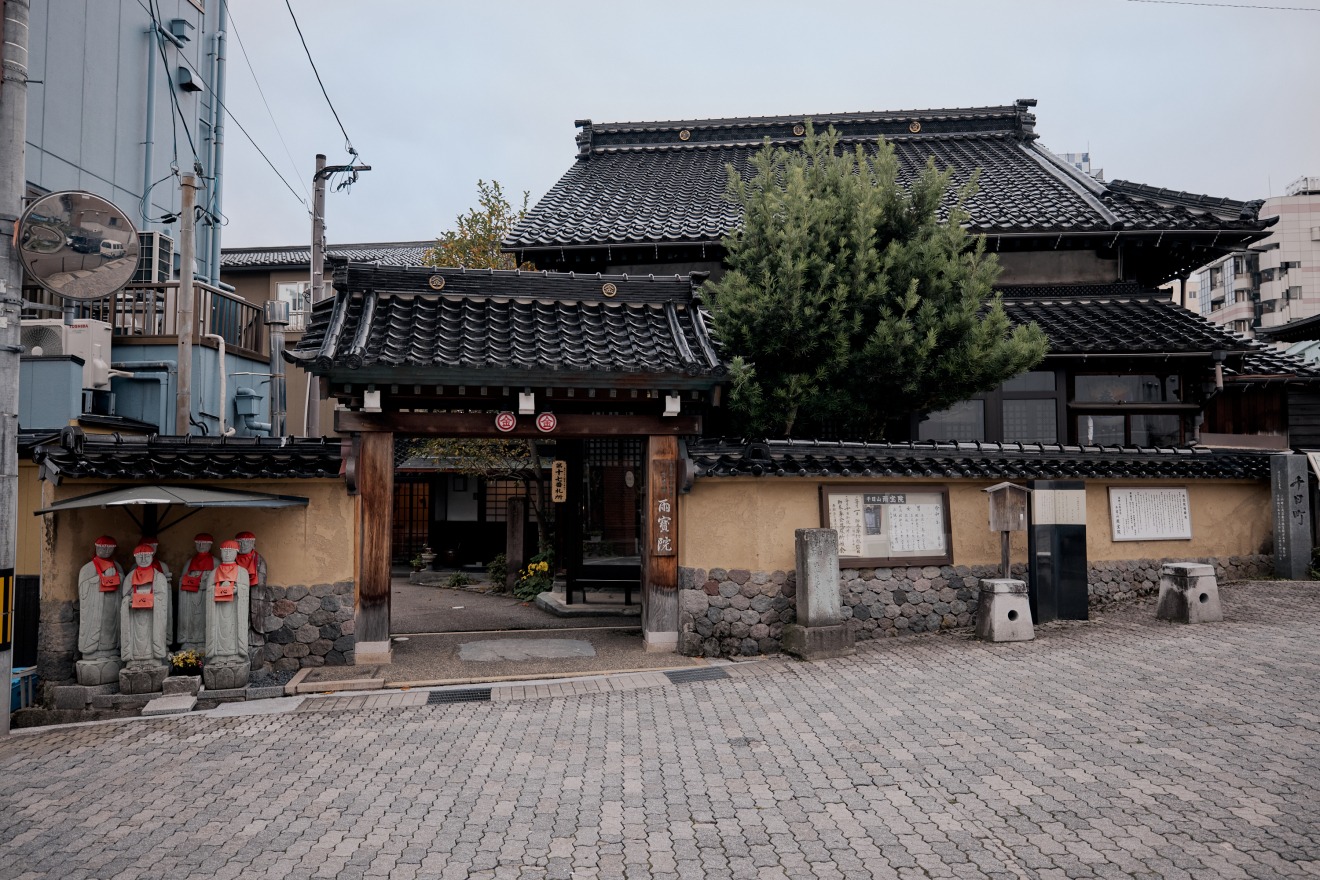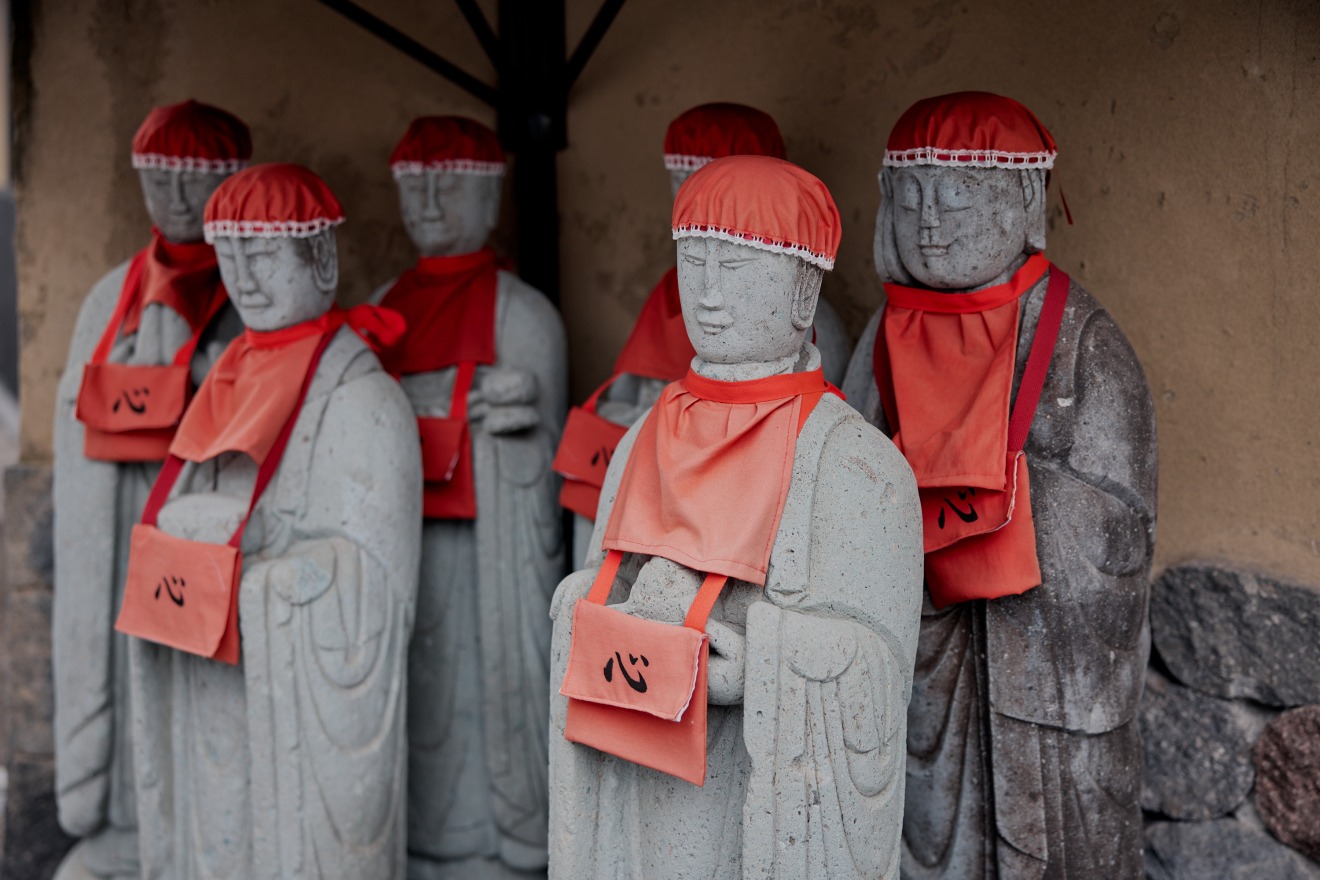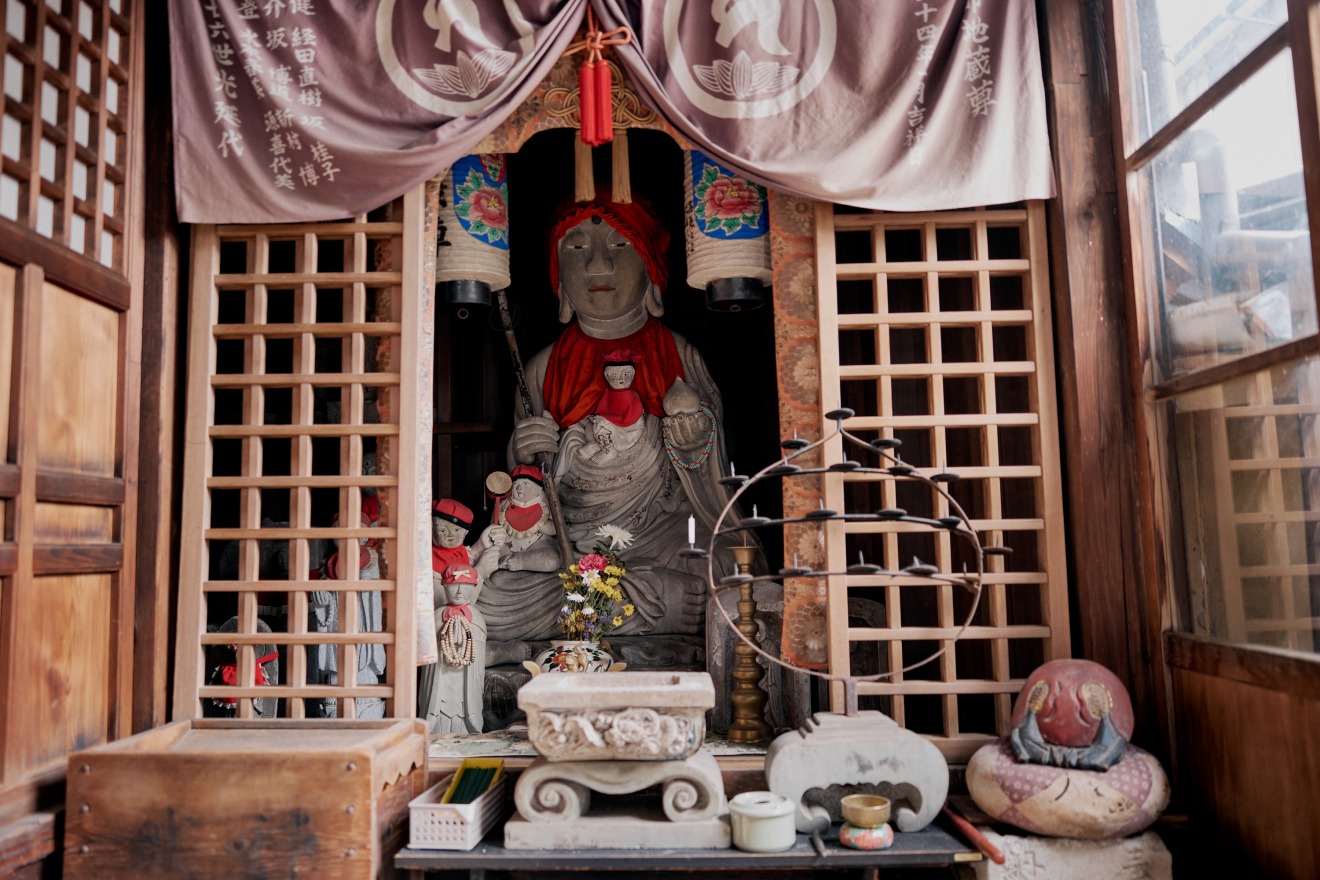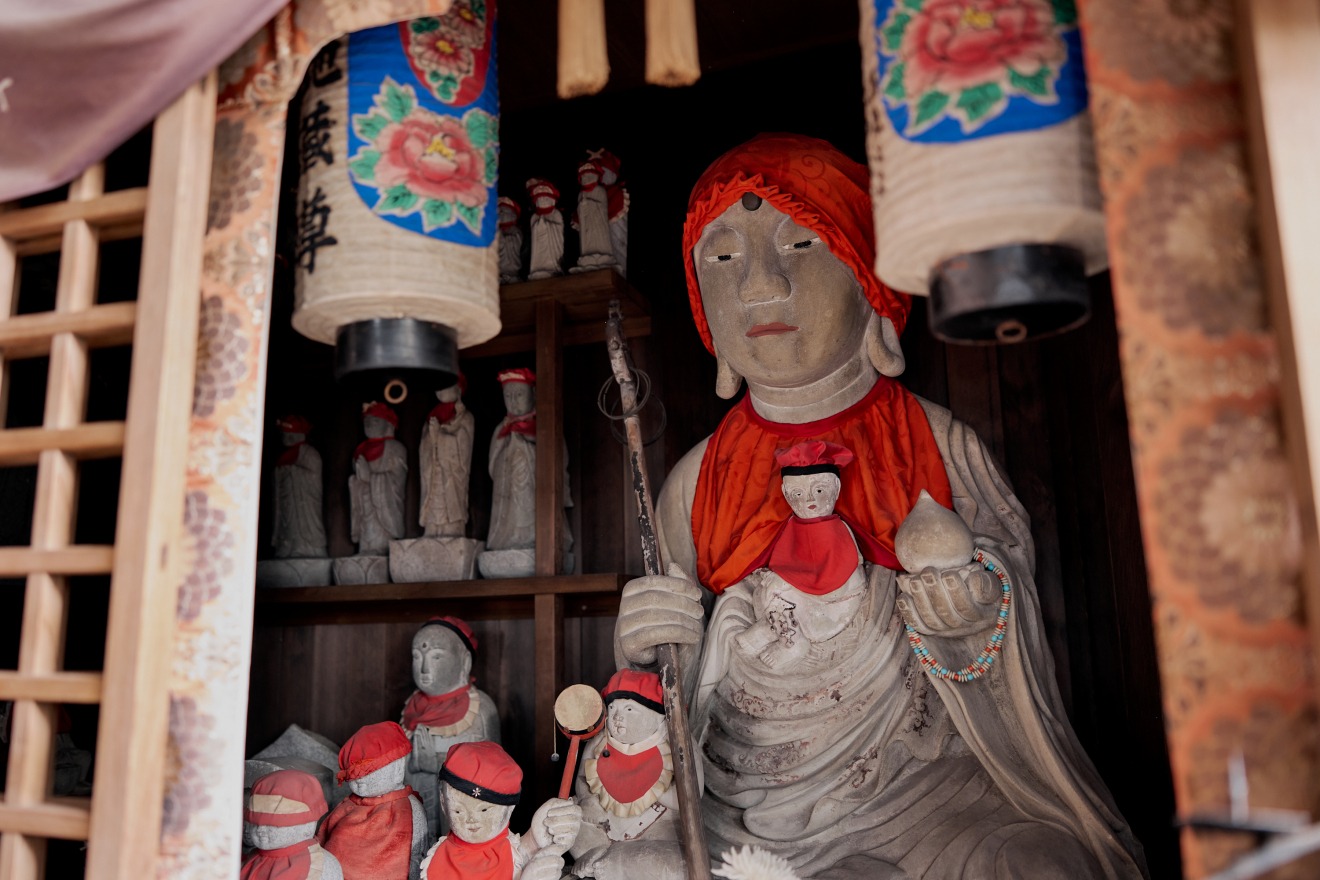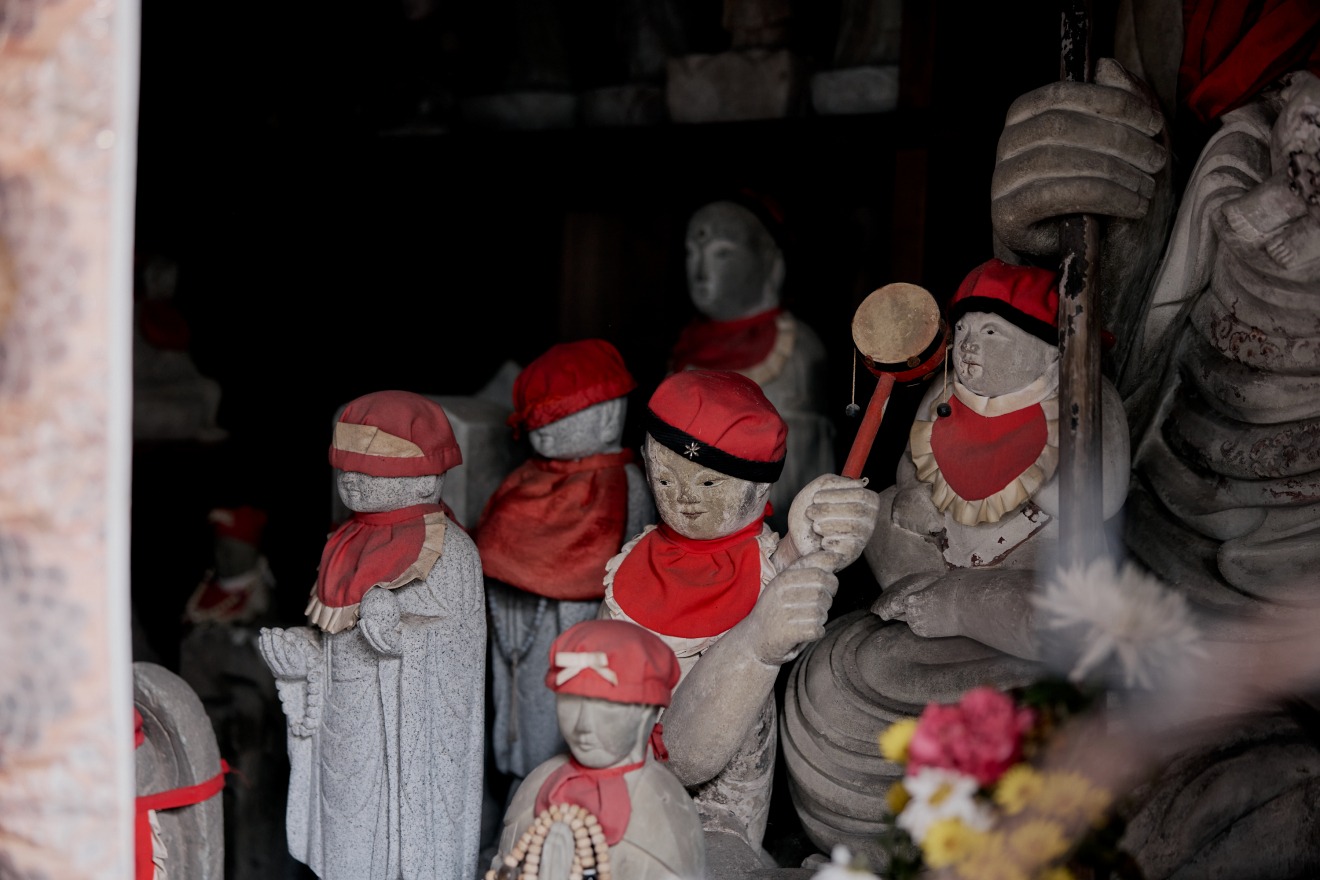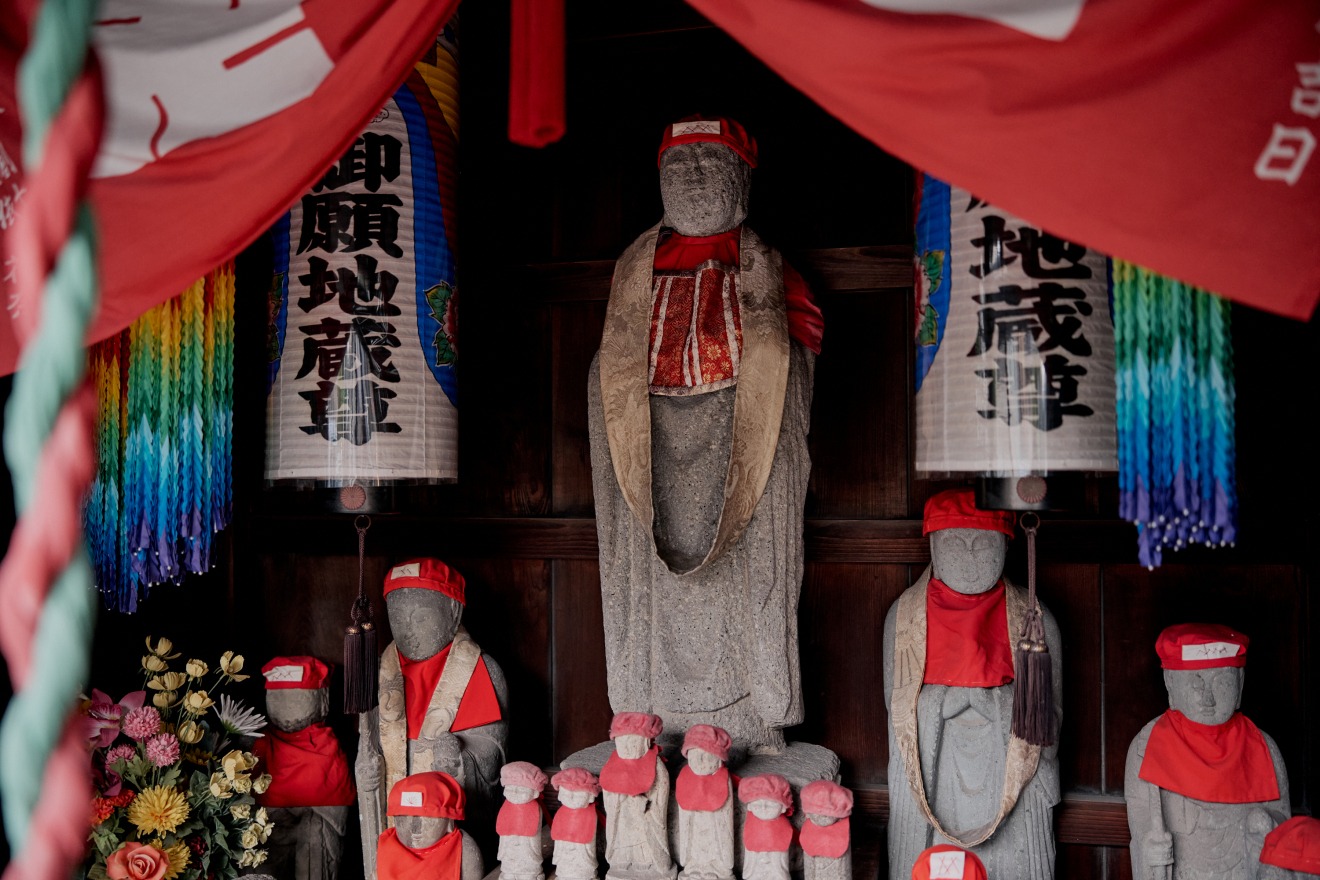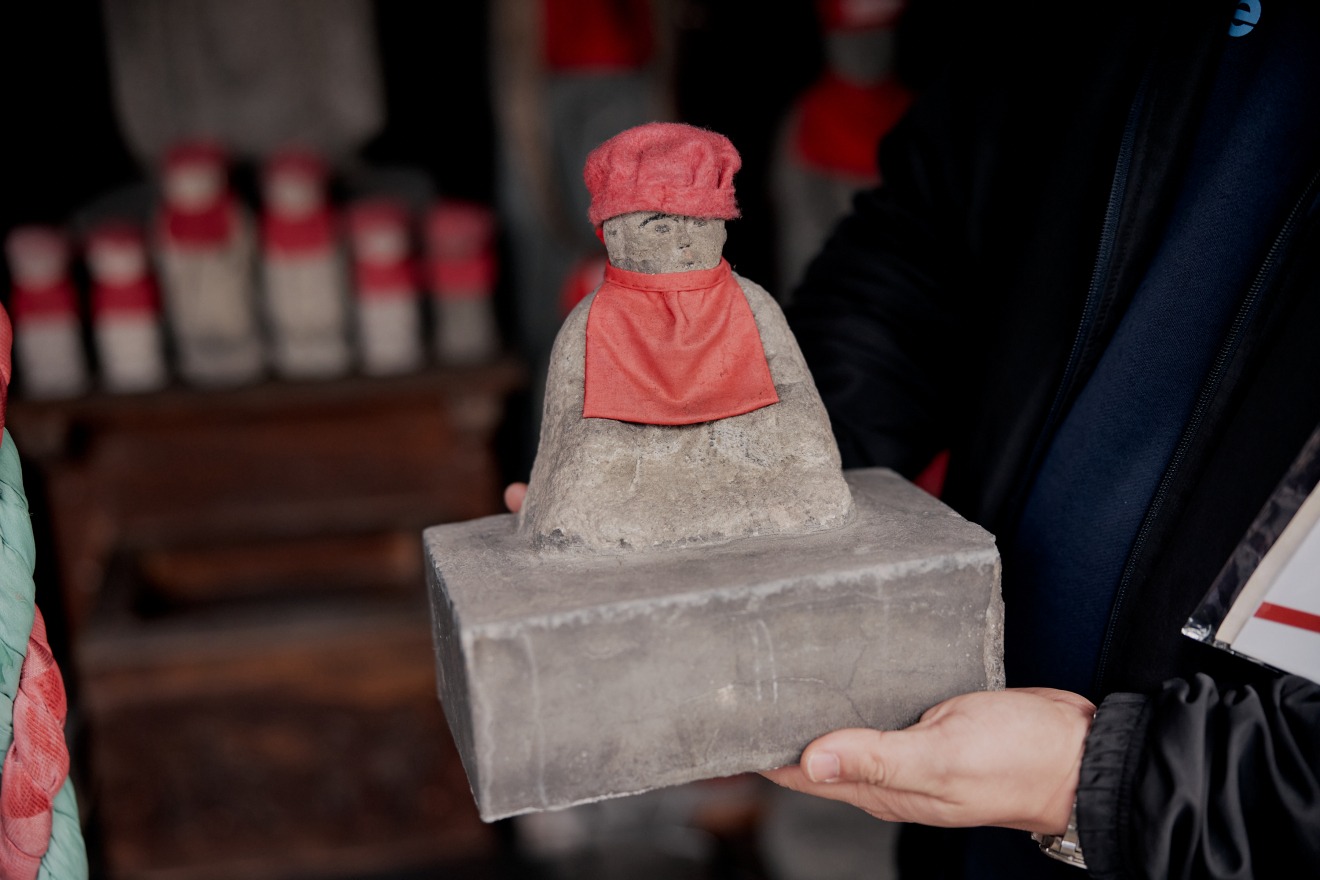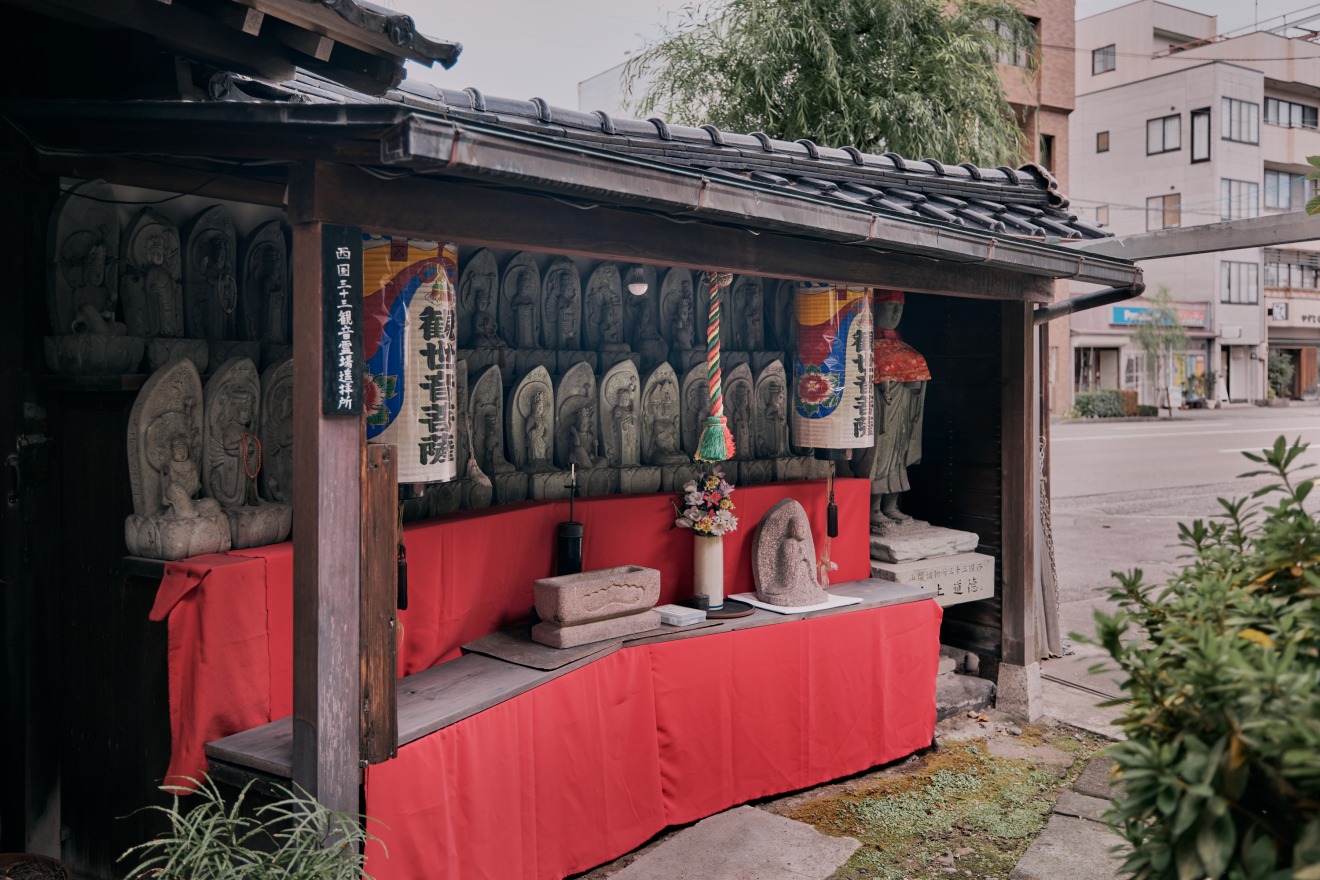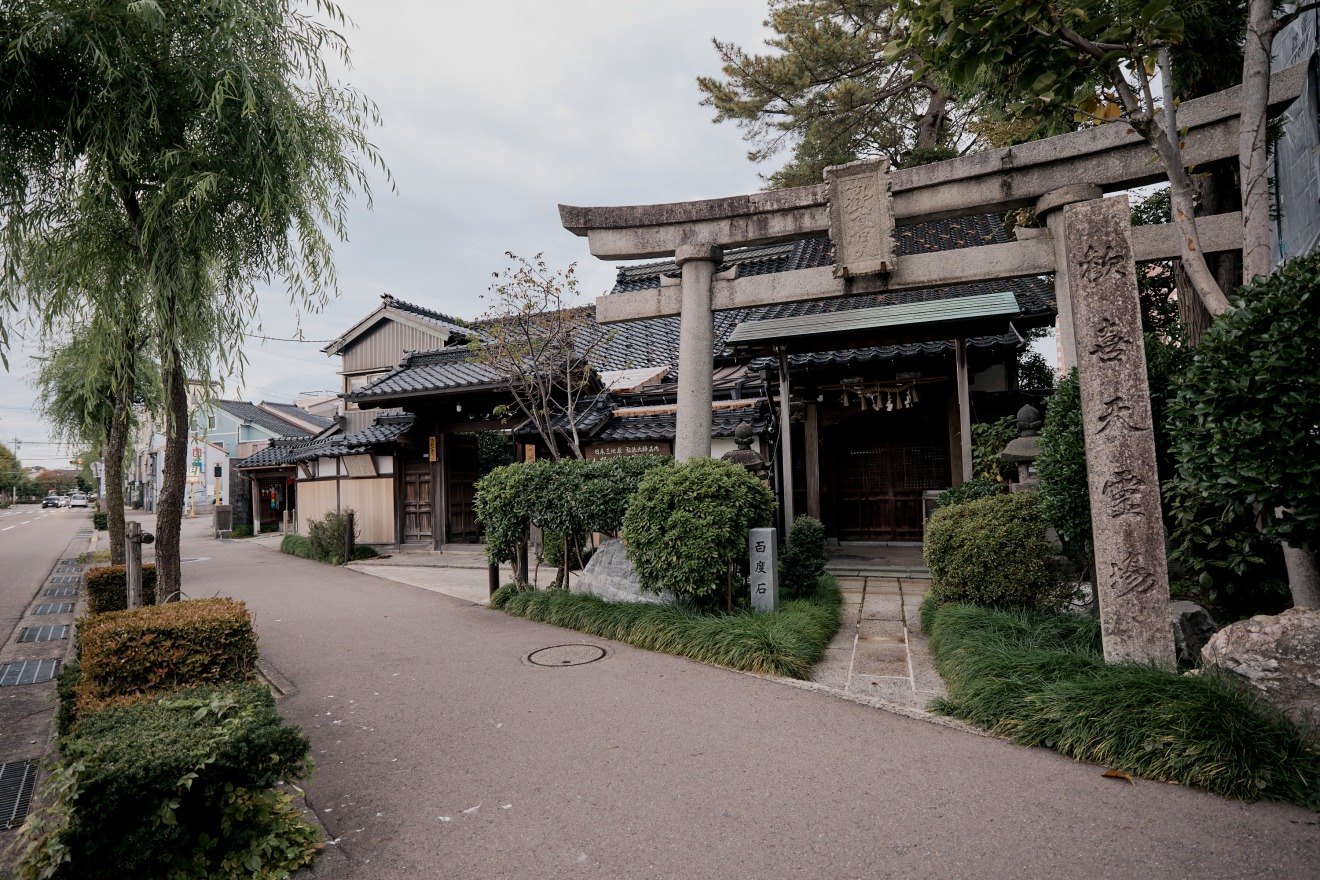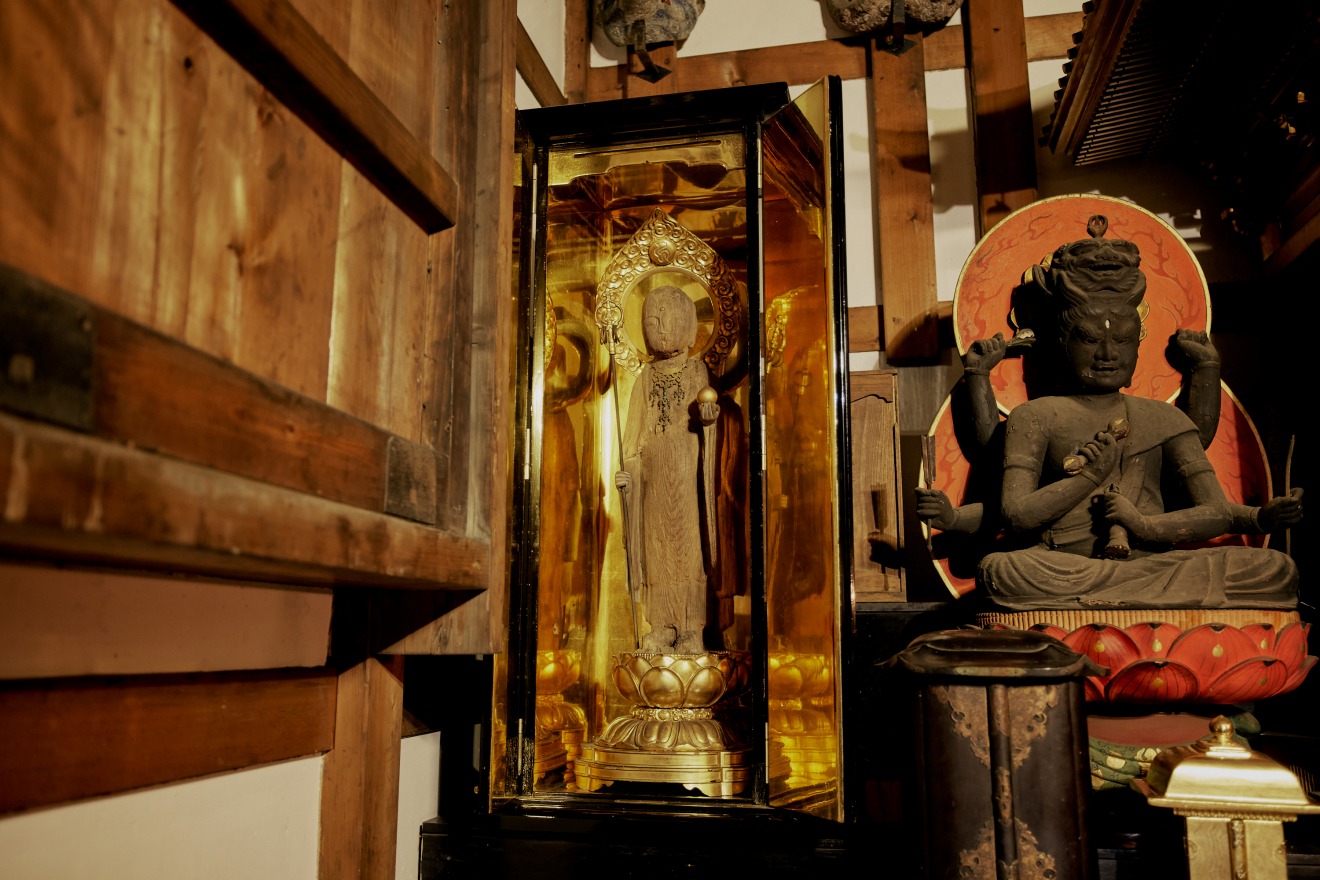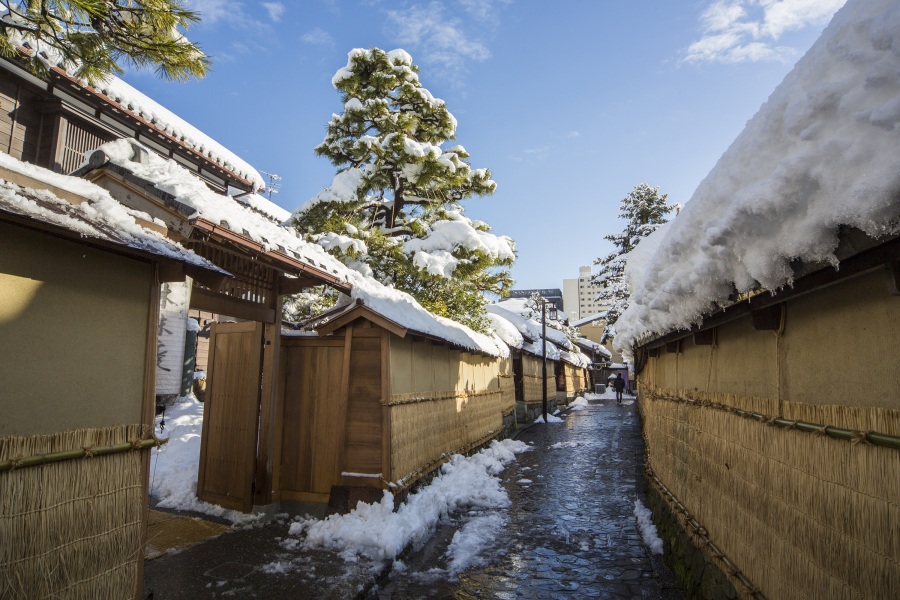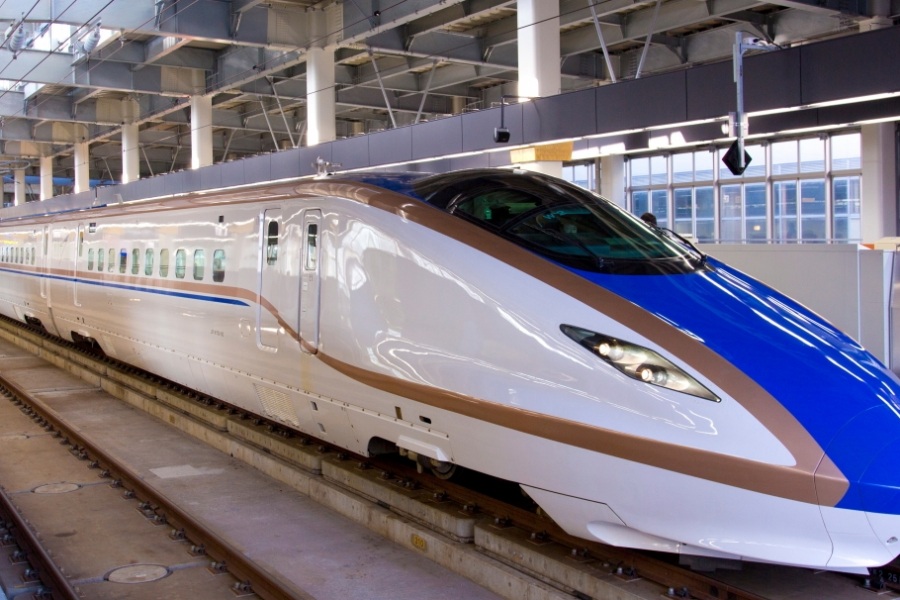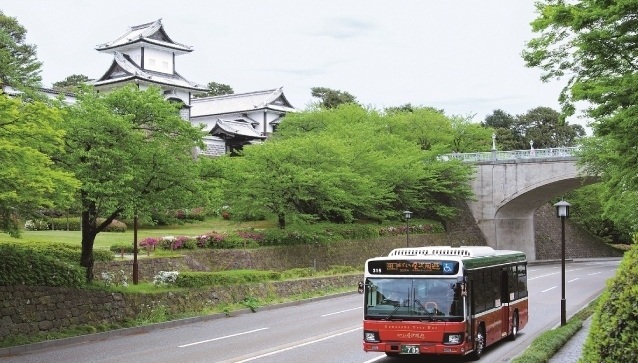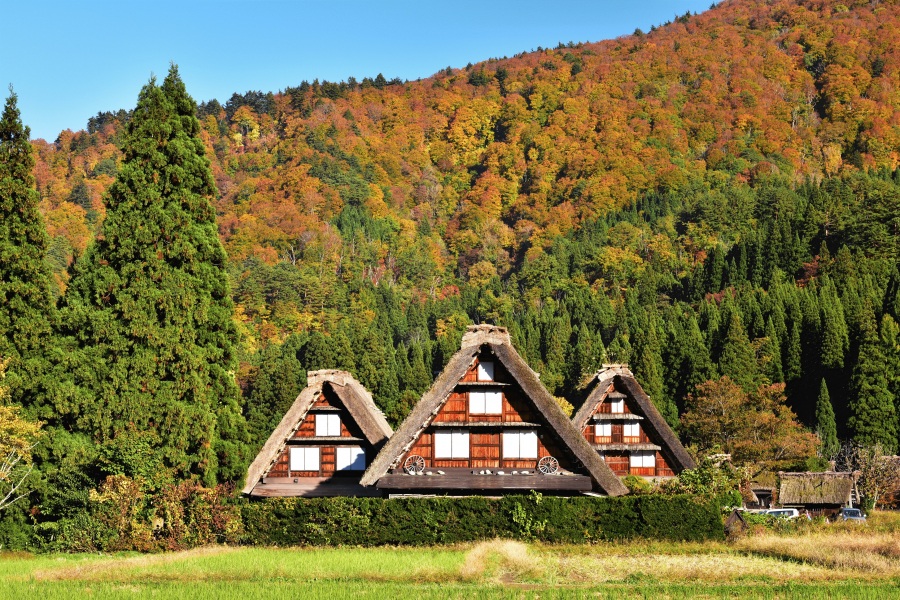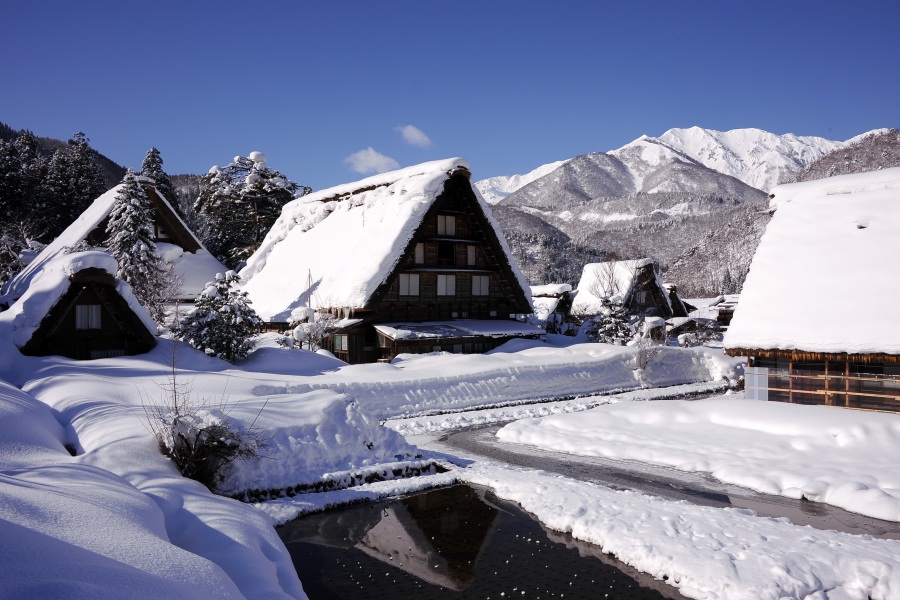The O-jizo-san of Kanazawa
O-Jizo-san are statues that represent Jizo, a form of Bodhisattva and a hugely popular divinity in Japan. Jizo is believed to protect children and travelers and save the faithful from hell, while their spiritual power grants protection and longevity to worshippers.
O-Jizo-san are highly visible and can appear anywhere in the landscape – before and inside temples, on roadsides, in rice fields, gardens, and homes. During the Edo period (1603-1868), an O-Jizo-san pilgrimage involving 33 Buddhist temples on or near the Saigawa River was popular, though today this pilgrimage has largely been forgotten.
This article features four Kanazawa temples with O-Jizo-san of cultural and historic value. If you visit Higashi-chaya District, Katamachi, or Teramachi Temple Area, the following Jizo will be easy to find.
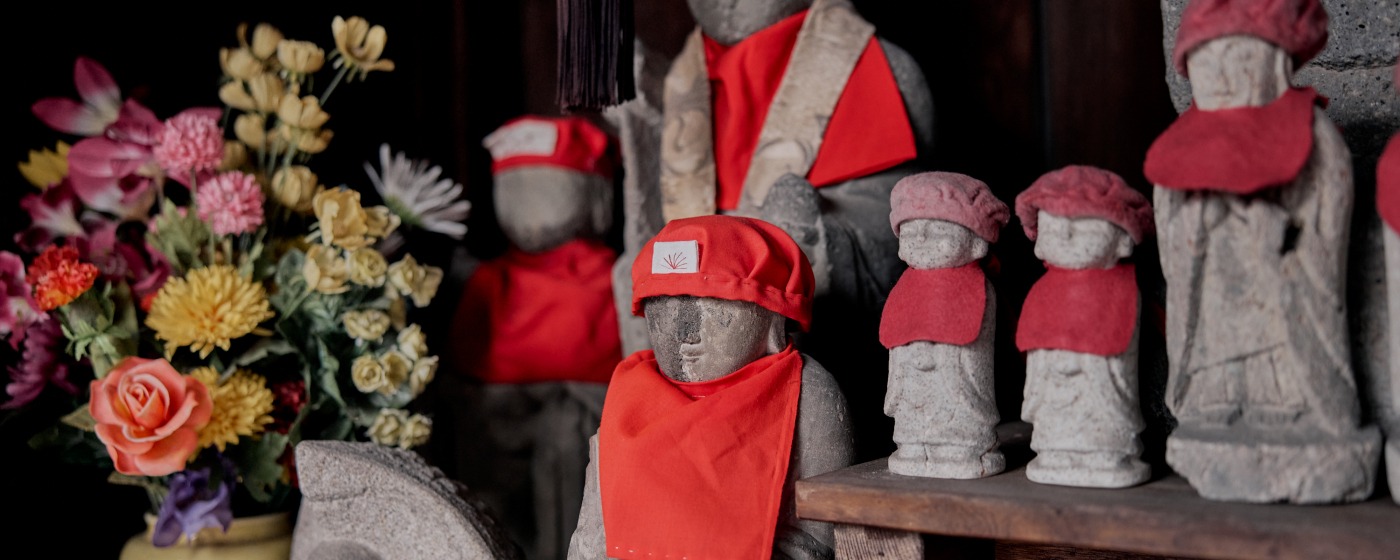
Nanaine Jizo Statues, Jukyoji Temple
As visitors will quickly learn, Kanazawa’s former geisha and tea district of Higashi-chaya is an important historic and entertainment district. While most visitors will only wander through the mazy streets and eclectic shops of its well-preserved center, just off the beaten track there is much still to discover.
For O-Jizo-san enthusiasts and Japanese history buffs, Jukyoji temple is worth visiting. Originally built in 1624, and once famed as a sacred stop on a popular Kannon pilgrimage route during the Edo period, it houses seven O-Jizo-san associated with an infamous incident that occurred in 1858.
Following heavy rains that destroyed rice crops throughout the region, rice prices shot up and many commoners began to starve because of their inability to procure rice. In an unprecedented protest lasting two days, 2000 people marched from Mt. Utatsuyama to Kanazawa Castle demanding rice, and the local daimyo (ruler) at that time, Maeda Nariyasu, harshly punished seven men he considered instigators before acceding to the protestors’ demands. Two of these men died in prison, while the other five were hanged. Soon after, a memorial service was organized to commemorate these men’s bravery and selflessness, and seven O-Jizo-san statues were erected in their honor.
Jukyoji still holds memorial services for these men every August 26th. Attendees offer ripe ears of corn to the seven O-Jizo-san standing inside a long shelter beside the temple’s gate, and throughout the year one can see ears of rice placed upon their chests. The shelter also holds 42 smaller O-Jizo-san statues made by local students who, in the recent past, regularly helped clean the temple.
Shintenchi Jizoson Statue
In the heart of the Katamachi district, in an area called Shintenchi that is known today for its izakaya and bars, a nearly 1200-year-old O-Jizo-san is enshrined. Shintenchi has a distinctly retro feeling, as it harkens back to the immediate post-war years of the early Showa era when Katamachi took over the black market that had thrived along the Asanogawa River. Although Shintenchi was at its most bustling then, the spirit of those times and its hardworking businesspeople has been passed on to a younger generation. Shintenchi Jizoson looks over these new businesses and their owners to this day.
Nearly crowded out by the local business activity, and in an area that can get hopping once the sun goes down, this humble shrine does little to attract the attention it deserves. Shintenchi Jizoson’s origins are unknown, though it dates back to the early Heian period (794-1185). Said to possess great spiritual power, its ownership once passed to a retainer of the sixth Maeda lord of the Kaga domain (present-day Ishikawa prefecture), but it now belongs to the people of Shintenchi.
Local people have long revered this O-Jizo-san, and they celebrate it with a summer festival every year. They pray to Shintenchi Jizoson for the birth of a child, success in life, and a prosperous business.
Jizoson Statues at Uhoin Temple
Many temples in Kanazawa are old enough to be well-known on multiple fronts. In the case of Uhoin Temple in Sennichi-machi, part of the “Teramachi Temple Area,” there are more reasons to be well-known than most other Kanazawa temples.
Standing before Uhoin is a stone marker from 1827, when a major famine swept through Kanazawa, that explains how the temple offered refuge to hungry and parent-less children. For this act of generosity, Uhoin became known as a “Refuge for Children.” In a similar vein, the famous Kanazawa writer Muro Saisei was adopted and raised by the temple’s head priest and his family, and some relics from his life are kept at the temple now.
Uhoin was built in 1596 and soon became one of the temples in Kanazawa where Jizo was worshipped. The front of the temple shelters six O-Jizo-san, all of whom wear red caps, bibs, and o-kesa bags over their chests with the Japanese kanji for “heart,” “mind,” or “spirit” emblazoned on it. These Rokujizo represent the six ways that one can be saved by Jizo.
Nearing the Great Hall, at the end of the outdoor corridor before it, a second shelter features a statue of Koyasu Jizoson, the guardian deity of children and childbirth, seated in a lotus position with a baby carved into the folds of his robe. It is said that geiko (local geisha) from the Nishi-chaya district used to come here to pray for rich husbands, and because of Koyasu Jizoson’s rouged lips some people believe this O-Jizo-san is female and has the ability to ensure pregnant women safe deliveries.
Inside Jyurindo Hall, visitors will find Enmei Jizo Bodhisattva, considered to be a genuine work of Kobo Daishi (774-835) and acquired by Uhoin in 1889.
Yochiin Jizoson Statues
Tucked away between a Shinto torii gate and a Jizo shelter is Yochiin temple, which traces its history as far back as 824. Yochiin has the distinction of being a member temple of the Saigawa River O-Jizo-san pilgrimage that was popular during Edo times.
The Jizo shelter outside the temple holds more than 25 stone O-Jizo-san, all but one of which were created in the Meiji period (1858-1912). The largest statue here, the Onigawa Jizo Bodhisattva, is said to have been found standing in the nearby Onigawa River during excavations in the late 16th century and transported to Yochiin. Since then, it has become one of the temple’s centerpieces.
After passing through the temple’s outer gate and turning left before its Great Hall, visitors will see 33 more O-Jizo-san lined up beneath another wooden shelter. These were created during the Taisho period (1912-1926) and donated to the temple – mainly by local business owners – with each statue representing one of the 33 temples on the Saigawa River O-Jizo-san pilgrimage.
Inside the temple, one of the most revered O-Jizo-san comes from the Edo period and can be viewed in the temple’s inner sanctum. The temple’s best-known O-Jizo-san, however, was carved from hinoki wood over 1200 years ago and donated in 1694 to Yochiin from a temple near Mt. Tateyama in present-day Toyama prefecture. This O-Jizo-san is famous for being one of only three such statues in all of Japan that was carved by Kobo Daishi, one of the most famous Buddhist monks in Japan and the founder of the Shingon Buddhist sect in the 9th century. The temple allows public viewing of it only once every 33 years.
The temple’s interior is open to the public on special holidays, such as Golden Week (late April and early May), O-bon (mid-August), and Oshogatsu (January 1), but is otherwise accessible by appointment only.
Text by Novelist David Joiner
Photo by Nik van der Giesen
